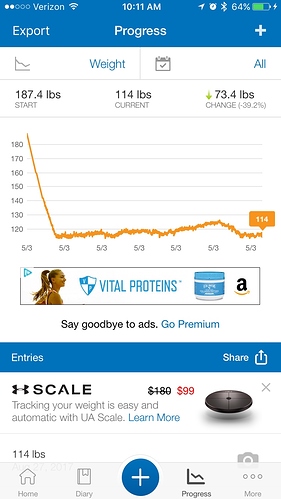YES! This! I started to regain my 70+ pounds. I got myself stopped at 8-10 pounds of regain. This was about 3 years into my 5.5 year maintenance, so far. Both bringing my fat grams closer to protein grams AND IF 17:7 , 6am to 1pm helped a lot.
I do think I was over on fat intake to a fault for my own body, my past 40 years of obesity, and having a desk job. My genetics. too. My body was telling me- um, too much fat, too much total.
I’m by no means low fat, but to have 5.5 years of weight maintenance, I have to cycle through a fat grams: protein grams close times and sometimes a little higher in fat. The IF is frosting on the cupcake I will never eat again due to food addiction remission. 
I do enjoy Amy’s and Ted’s articles to see what I can apply. Weight Maintenance is an art and science and takes adjusting for age, female/male, sports, hormone status, prior weight history, and existing disease. I’m telling you, we need more tools and experiments. My body lets me know, easily!
See that bump on the right side of the graph? That was me eating too much fat. It took a long time to figure it out, but I did. Tough lesson learned.
40 years of morbid obesity, Hashimoto’s, and menopause: I can tell you my fat wants to come back, but I won’t let it. Kudos to Amy and Ted for offering tools for our selection or exclusion. Onward.





